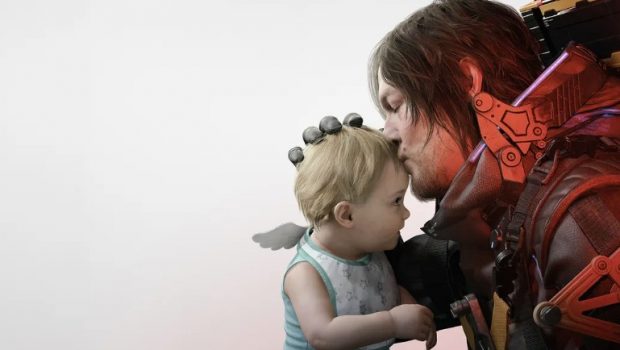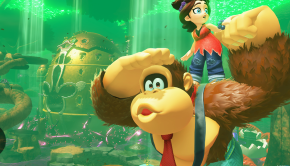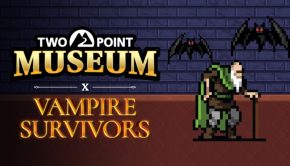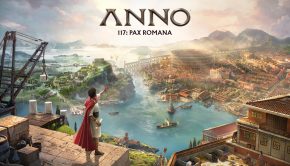Death Stranding 2: On the Beach – Australia Location Revealed – Kojima Interview, Hands-on Preview, DualSense Controller
With the upcoming release of Death Stranding 2: On the Beach, the highly anticipated sequel to 2019’s genre-defying open-world adventure Death Stranding, PlayStation has shared on the PlayStation Blog:
-
A hands-on preview of Death Stranding 2: On the Beach
-
Included in the blog post is the reveal of Australia as a playable location in the game: “The game depicts the diverse Australian nature and wildlife in vivid detail, including an animal sanctuary with lush vegetation that is home to animals like kangaroos, koalas and wallabies”
-
-
An interview with Hideo Kojima
-
The reveal of the DualSense wireless controller – Death Stranding 2: On the Beach Limited Edition.
The posts have been provided below for ease of access, with links to the original blog posts available at the end of this alert.
Death Stranding 2: On the Beach releases June 26 2025 on PS5.
Death Stranding 2: On the Beach Hands-On Report
Sam’s next journey takes him from Mexico to Australia
Death Stranding 2: On the Beach is set 11 months after the previous game. Sam Bridges, now living a quiet life with his BB (bridge baby) Lou, finds himself in Mexico following a request from Fragile. In Mexico, Sam gets caught up in an incident that eventually brings him to Australia. There, he must take on the herculean task of traversing across the continent to, once again, reconnect a fractured society.
Fast-paced story and gameplay
One point that stood out during the game’s hands-on was its fast-paced narrative and gameplay. The story in the first Death Stranding took things slowly in order to set the scene and carefully lay out the state of the world to the player. However, Death Stranding 2: On the Beach’s story unfolds at a faster pace, and players will get access to new equipment and structures much earlier in the game as well. New players can catch up on the story of the previous game via ‘Death Stranding Recap’ from the title menu and look up game terminology from the in-game ‘Corpus’ feature.
Enhanced visuals coupled with a standout soundtrack
Death Stranding 2: On the Beach takes full advantage of PS5’s capabilities to deliver stunning graphics. The depiction of nature is especially striking — right from the opening scene set in Mexico, where players walk along a rugged desert ridge. The rocky ground and billowing dust at Sam’s feet are rendered with such precision that the harshness of the terrain truly comes through.
The game depicts the diverse Australian nature and wildlife in vivid detail, including an animal sanctuary with lush vegetation that is home to animals like kangaroos, koalas and wallabies.
There’s also an option to switch to an ‘aerial camera’ that captures Sam from an elevated bird’s-eye view, which allows players to take in the vastness of the environment as they slowly make their way across the terrain.
The game’s soundtrack is also outstanding, and players will be moved every time the beautiful music plays when reaching a new delivery point.
Increased freedom and strategic opportunities
This game gives the player more choice and freedom in terms of strategy and decision-making.
One reason for this is the wide variety of equipment and structures that are available early on, a list that will continue to grow as the game progresses. This is the same for methods of transportation, as an array of infrastructure, motorcycles, and trucks will become available relatively early in the game.
In terms of combat, there are many bola guns and firearms to choose from, but if combat is not the player’s forte, they can assemble transportation devices to strategically avoid the danger zones. Players can also use smoke grenades to avoid combat as much as possible while navigating through dangerous territories.
Players can also leverage the newly implemented day/night cycle to their advantage. During the day, the terrain and enemies are more visible, but it is also easier for threats to locate the player. On the other hand, enemies are less likely to spot the player at night, and it is easier to sneak around, but they also must proceed with caution since there’s less visibility.
Responding and adapting to spontaneous natural hazards
Players must also be prepared for various natural hazards triggered by the environment. When an earthquake occurs, they may lose their balance due to strong tremors and falling rocks. If they are planning to trudge through rough terrain in the mountains, it would be a good idea to reduce the load in case of earthquakes. They’ll also need to steer clear of flooded rivers when there’s heavy rain. For example, players can extinguish wildfires with the ‘tar cannon’, a new piece of equipment available in the game.
Individual playstyle impacts Sam’s stats
In the previous game, Sam’s stats improved depending on his Porter Grade, but Death Stranding 2: On the Beach features 12 new ‘proficiency’ levels.
Similar to how players can upgrade their weapon proficiency by using them more often during combat, their playstyle will directly impact Sam’s stats and abilities. For example, if they spend more time travelling through rough terrain with unstable footholds, Sam’s ability to traverse rough terrain will improve faster. Every player’s stats will be different depending on the choices they make.
Customise Sam’s traits with APAS Enhancement
Another component that modifies Sam’s abilities is the new Automated Porter Assistant System Enhancement. By consuming ‘memories’ acquired during the game, players can enhance four different traits: porter, combat, stealth, and servicemanship. The number of memories players can pick up are limited, so it’s up to them to decide which traits they want to acquire and upgrade.
New enemies, new weapons, and even more compelling combat
Death Stranding 2: On the Beach introduces a new type of BT called the ‘watcher,’ which detects and attacks Sam through sight. There are also several new human antagonists, including a group called ‘Armed Survivalists,’ who assault with lethal firearms.
To take on these formidable threats, players can utilise a variety of new weapons that have been added to the game. Electrified poles that were the MULE’s weapon of choice in the previous game, can be used to strike or be thrown in this game to electrocute vehicles and enemies. In addition, various holographic grenades can be leveraged to avoid combat. A BT holographic grenade projects a hologram of a BT when activated, causing human enemies to flee. The robust selection of firearms allows for exhilarating combat, but many of these weapons are also ideal for stealth and ambush.
//
Death Stranding 2: An Interview with Hideo Kojima
In a recent interview for the PlayStation Blog, Hideo Kojima discussed how the theme of ‘connection’ played a part in the development of the sequel during COVID, and the challenges he faced when redesigning the gameplay.
Familiarising players with a new genre and offering more choice and freedom
PlayStation Blog: What were your goals when creating the sequel to Death Stranding? Were there any major changes or enhancements you were looking to implement?
Hideo Kojima: As we made the jump from PlayStation 4 to PlayStation 5, most of the changes were focused on game design and story. As you may recall, Metal Gear Solid was one of the first stealth games, and you had to go completely undetected to survive. There were no weapons available on the elevator at the beginning of the game, because if there were, players would most likely fight the enemies instead of sneaking past them. That defeats the purpose of a stealth game, so we intentionally left them out. Some said it was too difficult to reach the elevator (laughs), but the game included various mechanics to teach players how the stealth mechanics work. Then in Metal Gear Solid 2, we made some enhancements, like making weapon handling easier, or being able to target parts of the body from a first-person perspective.
Death Stranding 2: On the Beach was designed with a similar philosophy. Players familiarised themselves with the ‘delivery game’ genre with the first game, and the sequel builds on that and provides players with more choice and freedom, particularly around combat; you can go in guns blazing, or you can choose not to use weapons at all. We also made cars and motorcycles more accessible.
As for the story, the predecessor was centred around Sam and Cliff. This time, the story delves deeper into who Lou is, her relationship with Sam, as well as Sam’s backstory.
PlayStation Blog: Did the way players utilise the Social Strand System (SSS) surprise you in the first game? Did that have any impact on the development of Death Stranding 2?
Hideo Kojima: We weren’t initially sure if players would use the SSS, but we found that many players actually enjoyed the feature. Even now, five years after the game’s release, there are players that are still devoted to building highways, and that was a pleasant surprise. When developing the sequel, we came up with various ways to accommodate players who are passionate about building infrastructure like highways, and as part of that, we added the ability to build monorails.
One system the team debated over was the ‘likes’ mechanic. Likes in the game don’t have a physical impact – they can’t be converted to currency, nor do they make you stronger. Yet it feels good when you receive a like from another player as a token of appreciation. We anticipated some backlash when we implemented the feature in Death Stranding, but instead, players seemed to like the mechanic. When working on Death Stranding Director’s Cut, we reviewed the likes data and heatmaps to rework the feature based on our findings. Death Stranding 2: On the Beach further builds on that, so we have a better understanding of player behaviour.
PlayStation Blog: Why did you choose Mexico and Australia as the primary location for Death Stranding 2: On the Beach?
Hideo Kojima: Mexico shares a border with the UCA (United Cities of America), so the neighboring cities had to be connected. As Sam mentions many times in the game, we were extremely mindful that building these ‘connections’ didn’t appear invasive. Sam’s journey of connecting the Americas from east to west was inspired by the American frontier. With the UCA established, we wanted the sequel to take place in a location that shared a similar geography with the Americas — stretches from east to west and borders the sea in the north and south. Eurasia is too large, and Africa didn’t really fit the bill either. Australia checked all the boxes, but the next issue we faced was how to connect the North American continent with Australia. After a lot of discussion, we decided to implement the ‘plate gate’ to connect the two continents.
Revisiting what ‘connection’ means to humanity
PlayStation Blog: The core themes of the games shifted from ‘connecting people’ to ‘should we have connected?’ Was this due to your views on social media evolving over time?
Hideo Kojima: Death Stranding was in development before COVID hit, and I felt like there was a global divide happening around then, especially following talks of Brexit. The theme of the game reflected my notion at that point in time, that humanity needed to connect and unite to avoid disaster. COVID happened three months after the game’s launch, and the world ended up getting fractured, like the game. However, we survived thanks to the internet. At the same time, I saw more people starting to disregard in-person connections and interactions, and that went against my belief around human communication. Only by venturing out can you meet people by chance or stumble upon unexpected places.
Death Stranding 2: On the Beach was already in the works before COVID, but we revisited the overall concept of the game after COVID. The predecessor was inspired by the fear of social fragmentation and isolation, but after experiencing COVID, I started ruminating over the dangers of being ‘too connected.’ I left a lot of clues in the game, like the stick and rope theory, so I think players will connect the dots in the end. You’ll encounter characters that will speak my thoughts in the game too.
One hint is that the previous logo had strands hanging downwards, which symbolised the game’s theme of establishing connections. Whereas the logo for Death Stranding 2: On the Beach has strands running down towards the logo. What does it mean to be connected? Should we have connected? Play the game to find out.
Revealing the DualSense Wireless Controller – Death Stranding 2: On the Beach Limited Edition
Keep the supplies moving with the latest piece of hardware for Porters heading out on a new journey – the DualSense wireless controller – Death Stranding 2: On the Beach Limited Edition.
Sony Interactive Entertainment worked closely with Kojima Productions on the controller design, customised with the insignia and motto of Drawbridge in vibrant orange.
The DualSense® Wireless Controller – DEATH STRANDING™ 2: ON THE BEACH will be available in Australia for a recommended retail price of $134.95 AUD.
Pre-orders start on 22 May 2025 at 10am local time.
The new controller launches on 26 June 2025 on PS5 alongside Death Stranding 2: On the Beach, where players can join Sam and his companions on a mission to save humanity from extinction.
Pre-order the Collector’s Edition or Digital Deluxe Edition for Early Access from 24 June 2025.







